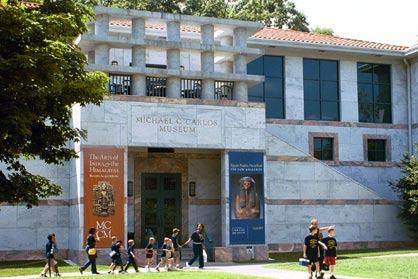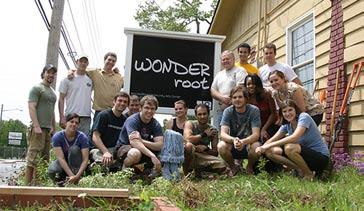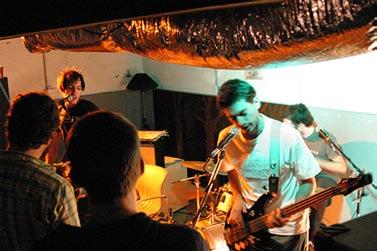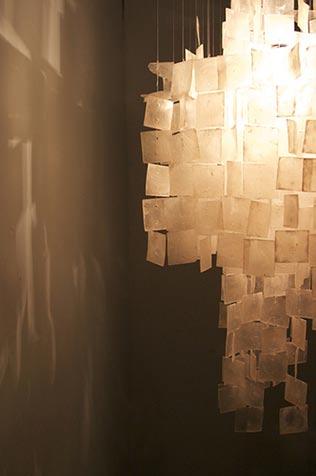
6 minute read
THE CULTURE REPORT: ATLANTAARTS
BIG SHOTS: ANDY WARHOL’S POLAROID PORTRAITS
Walking from photo to photo, you are immediately thrown back to a time where fluffy hair, lip liner, and spandex were acceptable. (No, I am not talking about American Apparel’s website.)
The collection displays just some of Warhol’s Polaroids, spanning a period from 19741985. “But Lauren, I thought Andy Warhol was a silkscreen artist, Campbell’s Soup cans? Marilyn Monroe? What’s with these polaroids?” Ah, funny you should ask unidentified reader. These polaroids are where those great works started. Before Andy (we’re on a first name basis here) would create his silkscreen designs, he would photograph his subject first, snapping over a hundred polaroids during a sitting. He used these, at the time inexpensive polaroids as a “sketch” that he would analyze and scrutinize, working his magic to turn them into the silkscreen creations that would run for about $25,000 each.
relationship between photographer and subject while also providing interesting tidbits into Warhol’s experiences and life. It is quaint and of course quirky. It makes you want to break out your old Polaroid camera, put on some outrageous makeup, and go to Studio 54, with Andy of course, and some ecstasy…
-Lauren Ladov
YOUNG BLOOD GALLERY & BOUTIQUE
636 North highlaNd aveNue
Tucked behind the marble statues of the Greek Gods and past the decorative urns that you, or perhaps only I cannot look at without thinking that the characters will come to life and start singing “Zero to Hero” from Disney’s Hercules, ahem, is a brightly lit square room with pale beige square walls, a wooden square table, and thirty-two tiny square faces.
Big Shots is one of Carlos Museum’s newest exhibitions, a collection of pop artist Andy Warhol’s Polaroid portraits. These photos are a stark contrast to what the image of Carlos Museum is. The Carlos Museum is one of the Southeast premier museums with major collections of Classical, Ancient Egyptian, Near Eastern, and Ancient American,
African and Asian art, not Pop Art from the king. The Carlos Museum is known for publishing important scholarly catalogues and promoting highly classical art. Thus, one might find the exhibition to be a pleasant surprise.

His subjects range from athletes and actors to fellow Studio 54 socialites. A highlight, for instance, is Sylvester Stalone. Perhaps it is because I am a Philadelphian, and we are by nature required to obsess over three things: eating cheese steaks, singing the Eagles’ cheer in any social situation-even if it is totally unwarranted, and watching the Rocky movies, that I had to pay homage to my hometown’s hero.

Just a few faces down, is that of Mother
Goose’s. And sorry, this is not the actual Mother Goose, but it is an extremely rare picture nonetheless. This polaroid was taken as part of Warhol’s “Myths” series, but was left out of the portfolio for continuity reasons. Thus, this little lady’s portrait is a myth on its own.
Lastly, the focal point of the exhibition is the portrait of Lillian Carter, our very own Jimmy’s mama. Lillian and Warhol apparently had a very close relationship. Warhol remarks, “Miz Lillian, she kept saying that she
She sort of does. It was too nutty.” Oh Andy The small polaroid sits next to its elaborate colorful, silkscreened partner, showing just a glimpse into the brilliant mind of Andy Warhol.
The collection will remain up through December 14. It is a fascinating glimpse into the
Cruising down North Highland at night is always fascinating with the neon lights of the Majestic and Urban Outfitters piercing the night. One such night this past summer, I was there, passing Vacation and the San Francisco Roasting Company, when I stumbled across a crowd outside the Young Blood Gallery and Boutique. Shrouded by a haze of cigarette smoke, people were gathered for the opening of Derek Weisberg and Crystal Morey, two ceramic artists who create humanistic figurines that are obscured yet still oddly realistic. Morey’s figures resemble flowing female forms while Weisberg’s are gaunt, haunted male figures with an overlay of pain and misery. This opening got me hooked on the boutique and gallery space.
Young Blood Gallery and Boutique is divided into two spaces, the front with an assortment of handmade or designed pieces and a gallery area in back. The boutique has an assortment of jewelry, clothing, and other unique items. One particular pendant that caught my eye on my last visit was a silver octopus with jewel-encrusted eyes.
Kelly Teasley and Maggie White founded Young Blood in 1997 in their home. Both were discouraged by the lack of interest by Atlanta-based galleries in presenting local or young artists. They went to many house band parties throughout college and wondered why couldn’t art be displayed in the same way. So they began trying out their idea, hosting art house shows where they exhibited many local artists. They moved into an old TV repair shop in Grant Park in 1999, turning it into a gallery space. They have since expanded and now are settled in their current location in the Poncey Highlands.
“Young Blood is looking for alternative imagery that is fresh and shows artists with minds of their own,” says Christina, an assistant at the gallery, about the artists the gallery wants to showcase.
Teasley elaborates, “We choose emerging artists, artists who are creating new and exciting work, who are on the forefront of different art trends and who are serious and passionate about their work.” The owners select about twelve artists each year from around 100 submissions to showcase in the gallery.
Young Blood has openings the first Saturday of every month, and Kraftwork, a market of do-it-yourself goods, shows new work the first Thursday of every month. The gallery is a unique gem in the Atlanta scene as it goes against the established gallery system to focus on new and emerging artists.
-Charlie Watts
Since its founding in 2004, the non-profit WonderRoot has been committed to promoting art as an impetus for social change. The founders of WonderRoot believe artists are capable of inspiring change in their communities through socially conscious art and participating in area service projects. Art speaks across gender, race, and class boundaries to foster a sense of community and encourage dialogue among citizens.
Co-Executive Director Chris Appleton remarks, “One of WonderRoot’s primary concerns is to help build a healthy independent art infrastructure in Atlanta. We believe that in order to have a healthy city we must have a strong art community. WonderRoot helps to build that in a number of ways.”
WonderRoot directly engages with and promotes Atlanta area artists. Earlier this year, the organization formed the WonderRoot Community Arts Center in eastAtlanta, off Memorial Drive. The unassuming community center is a small house that blends in with the surrounding residential area. Instead of being located in a remote business district, WonderRoot fits directly into the community it serves, fostering a sense of solidarity. integrated into every aspect of the center. The gallery shows are curated by local artists and community organizers and are displayed for about a month. WonderRoot does not demand commission from art sales, with all proceeds going to the artists. The upcoming December show is curated by Mike Germon of Thoughtmaker and opens on December 4th. On January’s show, Appleton says, “Jonathan Putnam is organizing an art show, concert, film screening, panelist discussion, and workshops around the theme of currency. We are challenging artists to consider the meaning of the word currency. If artists are interested in participating in this show they can email currency@wonderroot.org.”

There are numerous opportunities for student artists and art appreciators to enjoy everything WonderRoot has to offer. Events held at the community center include band shows, workshops,

WonderRoot assists artists with production, distribution, and exposure of their work, making them unique within the Atlanta art scene. Appearing modest, the community center provides a wealth of resources and facilities. For a slim film festivals, and lectures. The workshops and lectures are often geared towards beginners, curious about exploring their artistic sides. With service work opportunities, artist members and volunteers expand their artistry beyond the center and into the city. Appleton stresses, “ I want people to know that WonderRoot is so much more than gallery space, so much more than production facilities, so much more than a music venue. fee, Atlanta artists gain unlimited access to a digital media lab, darkroom, ceramics studio, and recording studio. By providing these resources, WonderRoot encourages artists who may lack financial resources or equipment. Alive with creativity, the center provides the jumping-off ground for Atlanta artists to inspire the wider community.

Paintings, drawings, and photographs seep through the community center and line the walls of the meeting room, lounge area, and hallway. There is no area specifically designated as gallery space; instead art is
WonderRoot’s primary purpose is to use art as an agent of change. We believe that if we can empower people with the means to produce art, we can in turn empower people with the means to produce change.” Along with gallery space, WonderRoot provides artists with an invaluable creative community and, in turn, fuels the expansion of the arts scene within.
To find out more about WonderRoot, visit wonderroot.org or contact info@wonderroot.org.

-Emily Currier








